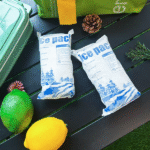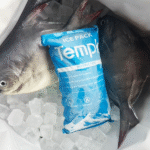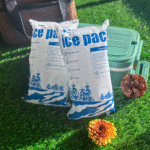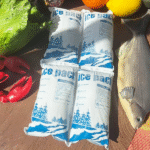Dry Ice Pack Meat Shipping: The Ultimate Solution for Safe Meat Delivery in 2025
Shipping meat, particularly over long distances, requires careful management of temperature to prevent spoilage and bacterial growth. In 2025, dry ice pack meat shipping has become one of the most reliable methods for maintaining meat quality during transit. Dry ice offers a cooling solution that keeps meat at ultra-low temperatures, making it an indispensable tool for businesses in the cold chain logistics sector. This guide will explore the best practices, regulatory requirements, and trends shaping dry ice meat shipping in 2025.
-
How much dry ice is needed for meat shipping?
-
What are the best practices for packing meat with dry ice?
-
What are the latest innovations in dry ice meat shipping in 2025?
-
How to comply with regulations and ensure safe shipments?
Why is Dry Ice Ideal for Meat Shipping in 2025?
Dry ice, the solid form of carbon dioxide (CO₂), is a critical element in cold chain logistics, especially for perishable goods like meat. Unlike regular ice, dry ice sublimates directly into gas without leaving any liquid residue, ensuring a mess-free shipping process. Here’s why it remains a go-to option for meat shipping:
Temperature Control
Dry ice helps maintain temperatures as low as -78.5°C (-109.3°F), ideal for frozen meat products. It is capable of keeping meats like steaks, sausages, and roasts frozen during long-distance shipments, ensuring that they arrive fresh and free from spoilage.
Extended Shelf Life
Unlike ice packs or gel packs that lose their cooling effect within hours, dry ice lasts significantly longer, which is especially important for extended transit times, such as international shipments. This makes dry ice perfect for ensuring that meat stays frozen, even during long periods of transit.
No Water Damage
Dry ice’s ability to sublimate directly into gas means that there is no risk of water damage to packaging or the meat itself. This ensures that the meat stays dry, preventing freezer burn and packaging deterioration.
Best Practices for Packing Meat with Dry Ice
Shipping meat requires more than just throwing dry ice into a container. Proper packing ensures that both the meat and dry ice maintain optimal conditions during transport. Follow these essential steps for safe and effective dry ice meat shipping:
1. Select the Right Amount of Dry Ice
The amount of dry ice required depends on several factors such as the meat weight, shipping duration, and environmental conditions. As a general rule, use 1–2 pounds of dry ice per 5 pounds of meat for every 24 hours of transit. For larger shipments, such as 20 lbs of meat, it’s recommended to use around 6 lbs of dry ice per 24 hours, adjusting based on distance and weather conditions.
| Meat Weight | Dry Ice (24 hours) | Dry Ice (48 hours) | Practical Application |
|---|---|---|---|
| 5 lbs | 1–2 lbs | 3–4 lbs | Small sample shipments |
| 10 lbs | 3–4 lbs | 5–8 lbs | Household subscription boxes |
| 20 lbs | 6 lbs | 10–12 lbs | Ideal for family-sized shipments |
| 40 lbs | 12 lbs | 18–22 lbs | Larger shipments require extra insulation |
2. Prepare the Meat
Proper packaging of the meat is essential to avoid freezer burn and leakage. The best practices for preparing meat include:
-
Vacuum Sealing: Removes air to prevent freezer burn and bacterial growth.
-
Double-Bagging: Provides an extra layer of protection against potential leaks.
-
Pre-Freezing: Freezing the meat before packing ensures that it is at its optimal frozen state before shipping.
3. Pack Dry Ice and Meat Together
Here’s how to pack the dry ice and meat together in a shipping container:
-
Layer Dry Ice Correctly: Start with a layer of dry ice at the bottom of the insulated container, place the meat on top, and then add another layer of dry ice on top of the meat.
-
Use Insulated Containers: Opt for rigid coolers or fiberboard boxes, insulated with foam or eco-friendly liners, to slow down dry ice sublimation.
-
Ensure Ventilation: Dry ice sublimates into carbon dioxide gas, so the container must allow the gas to escape to avoid pressure buildup. Use containers with vents to release the CO₂ gas safely.
4. Label the Package
Proper labeling is crucial for compliance and safety:
-
UN 1845 Labeling: Clearly label the package as “Dry Ice” or “Carbon Dioxide, Solid,” and include the UN 1845 number along with the weight of dry ice.
-
Perishable Item Labeling: Mark the box as “Perishable – Keep Frozen” to ensure the carrier knows the urgency of the shipment.
-
Documentation: For air shipments, include the necessary dangerous goods declaration form, indicating the total dry ice weight and the number of packages being shipped.
Regulatory Compliance for Dry Ice Meat Shipping
Shipping meat with dry ice requires compliance with various regulations set by agencies like the Department of Transportation (DOT) and the International Air Transport Association (IATA). These regulations ensure safe handling and shipping of dry ice, which is classified as a hazardous material. Key regulatory requirements include:
-
Proper Shipping Name: Always label the package as “Dry Ice” or “Carbon dioxide, solid” with the appropriate UN 1845 number.
-
Dry Ice Weight Limits: For air shipments, dry ice quantities are capped by weight limits (usually 5 lbs per package for USPS and up to 200 kg for air freight).
-
Venting and Packaging: Packaging must allow for the safe release of CO₂ gas to avoid pressure buildup. Avoid sealed containers like steel drums or airtight plastic bags.
For 2025, new regulations emphasize enhanced venting, temperature monitoring, and pressure testing for packaging. IoT sensors and digital air waybills (eAWB) are becoming more common for ensuring compliance with these updated rules.
Trends Shaping Dry Ice Meat Shipping in 2025
As the cold chain logistics industry continues to evolve, several trends and technologies are shaping the future of dry ice meat shipping:
1. Sustainable Dry Ice Production
The dry ice industry is focusing on sustainability by using carbon capture technologies to produce dry ice more efficiently and with less environmental impact. Companies are increasingly integrating eco-friendly production practices to reduce their carbon footprint, meeting growing consumer demand for sustainable practices.
2. Smart Packaging and IoT Sensors
Smart packaging is becoming more common in the shipping industry. IoT sensors embedded in the packaging help monitor the temperature and humidity in real time, allowing for better control and ensuring that the meat remains within safe temperature ranges throughout the transit process.
3. Advanced Insulation Materials
New insulation materials, such as phase-change materials (PCMs), are helping to extend the duration of cooling during meat shipments. These materials store and release energy as they change phases, making them more efficient than traditional insulation methods.
Frequently Asked Questions (FAQ)
Q1: How long does dry ice last when shipping meat?
Dry ice typically lasts 24–72 hours, depending on insulation quality and ambient temperatures. The amount of dry ice used and the type of packaging significantly affect the duration.
Q2: Can dry ice damage the meat during shipping?
When packed properly, dry ice does not damage meat. However, direct contact with the dry ice or improper handling can lead to freezer burn or dehydration. Always use insulated containers and vacuum sealing.
Q3: Is dry ice shipping expensive?
While dry ice is often more costly than traditional ice, its longer cooling duration and mess-free properties make it a cost-effective option in the long run. Reducing spoilage and ensuring that the meat reaches its destination safely can help avoid financial losses.
Conclusion and Actionable Next Steps
In summary, dry ice pack meat shipping is an essential solution for keeping meat fresh during transit. By following the best practices for packing, calculating the right amount of dry ice, and adhering to regulations, businesses can ensure safe, reliable meat shipments.
Actionable Next Steps:
-
Assess your dry ice needs using the provided formula.
-
Upgrade packaging to high-performance insulation and ensure proper ventilation.
-
Implement temperature monitoring to track your shipments in real time.
-
Train your team on safety protocols and handling guidelines.
About Tempk
Tempk provides advanced cold chain logistics solutions, including dry ice shipping kits, smart sensors, and insulated packaging designed to ensure safe and efficient transportation of perishable goods. Contact us today to optimize your shipping process with our reliable and sustainable solutions.
























